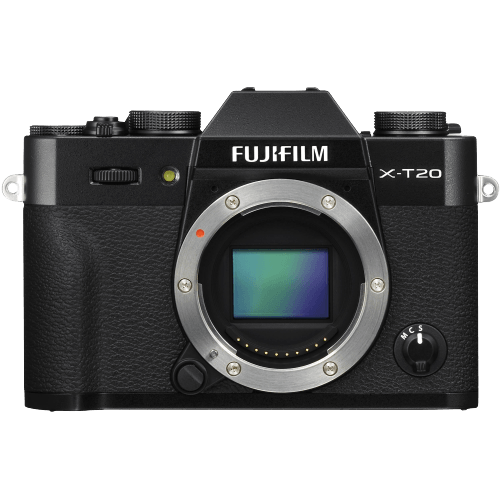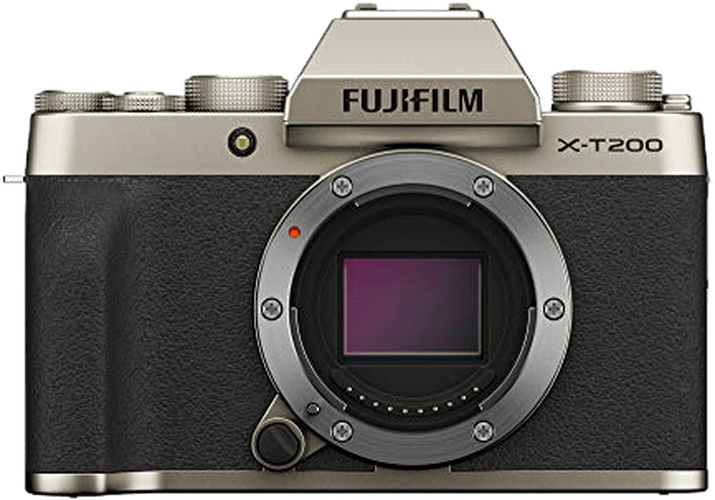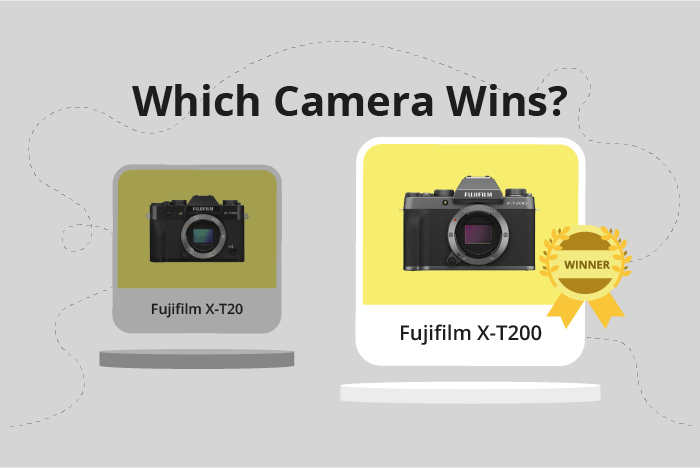Fujifilm X-T20 vs X-T200 Comparison
Fujifilm X-T20

Fujifilm X-T200

The Fujifilm X-T200 takes the lead with a score of 66/100, while the Fujifilm X-T20 trails behind at 63/100. Both cameras are mirrorless and share similar dimensions, with the X-T200 being slightly larger at 121 x 84 x 55mm compared to the X-T20’s 118 x 83 x 41mm. The X-T200 is also a tad lighter, weighing 370g versus the X-T20’s 383g.
The X-T200 outshines the X-T20 due to its newer release in 2020 and a more affordable launch price of $699, compared to the X-T20’s 2017 release and $900 price tag. However, the X-T20’s more compact size may appeal to some users who prioritize portability.
Taking these factors into account, the Fujifilm X-T200 offers better value for money, while the X-T20 caters to those preferring a smaller camera.
Fujifilm X-T20 vs X-T200 Overview and Optics
The Fujifilm X-T200 emerges as the winner in the optics comparison with a score of 67/100, slightly edging out the Fujifilm X-T20, which scored 65/100. Both cameras share several specifications, including 24 megapixels, an 8 fps shooting speed, a CMOS sensor, an APS-C sensor size, and a Fujifilm X lens mount. However, certain differences give each camera its unique advantages.
The X-T200’s primary advantage is its built-in image stabilization, which the X-T20 lacks. This feature allows for sharper images and smoother video recording, especially in low-light conditions or when using longer focal lengths. The image stabilization in the X-T200 contributes to its higher optics score and makes it a more versatile camera for various shooting situations.
On the other hand, the X-T20 has a more advanced processor, the X-Processor Pro, compared to the unspecified processor in the X-T200. The X-Processor Pro allows for faster image processing, quicker autofocus, and better noise reduction. While this advantage does not outweigh the benefits of image stabilization in the overall optics score, it does make the X-T20 a strong contender in certain situations where speedy performance is crucial.
Taking these factors into account, the Fujifilm X-T200’s image stabilization gives it a slight edge over the X-T20 in terms of optics. However, the X-T20’s superior processor should not be overlooked, as it provides faster performance in certain situations. Ultimately, the choice between these two cameras depends on the user’s priorities: image stabilization for versatile shooting or a more advanced processor for faster performance.
Fujifilm X-T20 vs X-T200 Video Performance
The Fujifilm X-T200 outperforms the Fujifilm X-T20 in video capabilities with a score of 91/100, compared to the X-T20’s 83/100. Both cameras share common specifications, including a maximum video resolution of 4K and dimensions of 3840 x 2160. Additionally, both cameras have built-in time-lapse functionality.
The X-T200 surpasses the X-T20 in terms of maximum video frame rate, offering 120fps compared to the X-T20’s 60fps. This higher frame rate allows for smoother and more detailed slow-motion footage, making the X-T200 a better choice for videographers seeking advanced video features.
On the other hand, the X-T20 does not offer any significant advantages over the X-T200 in terms of video capabilities. The only difference between the two cameras lies in their video frame rates, and in this aspect, the X-T200 clearly excels.
Considering these points, the Fujifilm X-T200 emerges as the superior camera for video performance due to its higher frame rate. Its 120fps capability provides videographers with more flexibility and creative options, while the X-T20’s lower frame rate does not offer any distinct advantages. Therefore, those seeking a camera with strong video capabilities should opt for the Fujifilm X-T200.
Fujifilm X-T20 vs X-T200 Features and Benefits
The Fujifilm X-T200 wins in the features comparison with a score of 74/100, while the Fujifilm X-T20 scores 70/100. Both cameras share some common specifications, such as having a touchscreen, flip screen, WIFI, and Bluetooth connectivity.
The X-T200 outperforms the X-T20 in screen size and resolution. With a 3.5-inch screen, it offers a larger display compared to the X-T20’s 3-inch screen. The X-T200 also boasts a higher screen resolution of 2,780,000 dots, providing a sharper and more detailed image preview than the X-T20’s 1,040,000 dots.
However, the X-T20 has an advantage over the X-T200 in terms of GPS functionality. The X-T20 includes built-in GPS, which allows users to geotag their photos, making it easier to organize and locate images based on location. The X-T200 does not offer GPS capabilities.
Considering these differences, the Fujifilm X-T200 stands out as the better option for photographers who prioritize a larger, high-resolution screen for improved image preview and composition. On the other hand, the Fujifilm X-T20 may be more suitable for those who value GPS functionality for geotagging purposes.
Weighing the advantages and disadvantages of each camera’s features, potential buyers can make an informed decision based on their specific preferences and requirements.
Fujifilm X-T20 vs X-T200 Storage and Battery
The Fujifilm X-T200 wins in the storage and battery category with a score of 29/100, while the Fujifilm X-T20 scores 21/100. Both cameras have one memory card slot and accept SD, SDHC, and SDXC cards. However, the X-T200 is compatible with UHS-I, while the X-T20 supports faster UHS-II cards.
The X-T200 offers the convenience of USB charging, which the X-T20 lacks. This feature makes it easier for users to charge their camera on the go. However, the X-T20 has a longer battery life of 350 shots compared to the X-T200’s 270 shots. Both cameras use the same NP-W126S battery type.
Despite the X-T20’s longer battery life, the X-T200’s USB charging capability and overall higher score make it the better choice in terms of storage and battery. The X-T20’s advantage of faster memory card compatibility may be important to some users, but the X-T200’s features cater to a wider range of user needs.
Fujifilm X-T20 vs X-T200 – Our Verdict
Are you still undecided about which camera is right for you? Have a look at these popular comparisons that feature the Fujifilm X-T20 or the Fujifilm X-T200:

